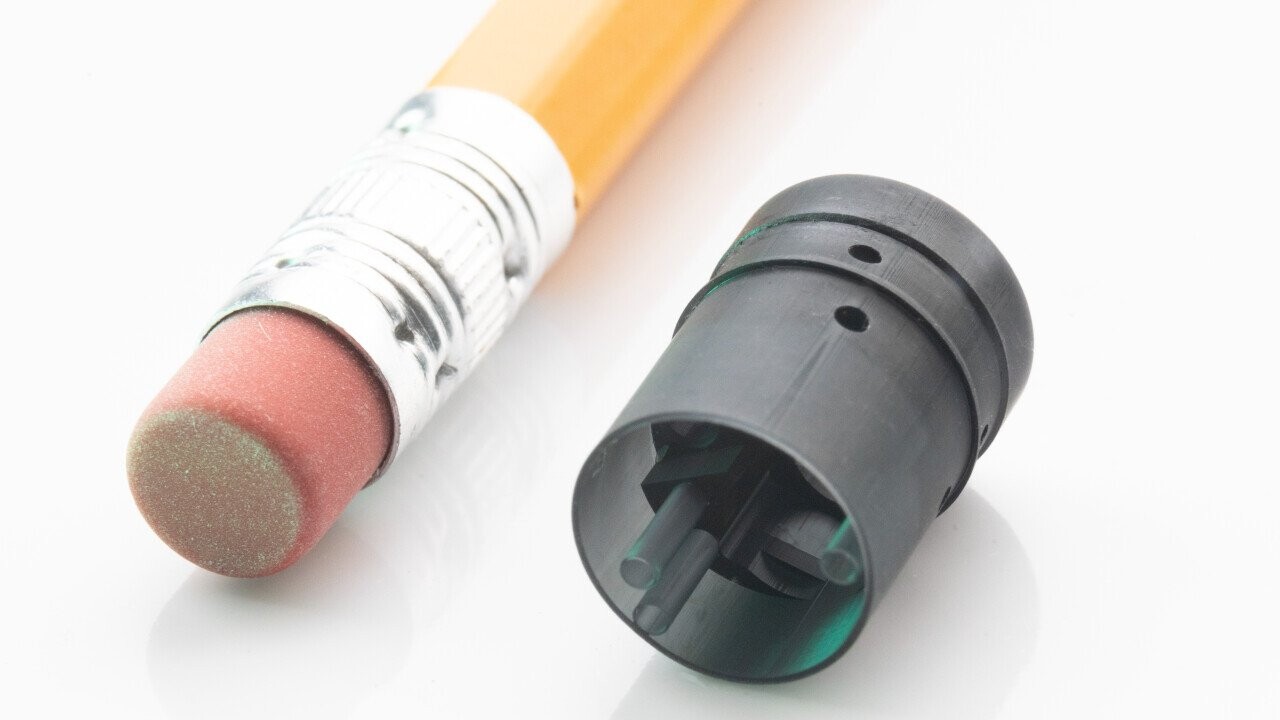Know-How AM Expo 2023
Injection molding or 3D printing of micro parts?
Traditionally, 3D printing has been used for prototyping and injection molding for production. But additive manufacturing has evolved: today there are 3D printing technologies that can be used to produce production-quality components - and in large quantities.
These technologies include projection micro-stereolithography developed by Boston Micro Fabrication (BMF), a form of micro-scale 3D printing that works with plastics, metal-coated plastics, ceramics, hydrogels and composite resins.
The molds and tools for plastic injection molding cost tens or even hundreds of thousands of euros and only pay off with high production volumes. Up to this transition point, 3D printing brings many advantages - after that, injection molding becomes more profitable. However, in addition to the quantity, there are other important criteria for selecting the right manufacturing technology. Here are ten factors to consider when deciding between injection molding and 3D printing.
1. Lead Times
Manufacturing the steel or aluminum molds needed for injection molding can take weeks or months. The injection molder then sends the customer sample parts for functional tests and dimensional checks. If the initial samples don't meet the requirements, the mold maker may need to adjust the tooling, further adding to the project's schedule.
3D printing shortens lead times. No metal tool is designed, mechanically processed and tested. Customers receive sample parts, but if changes are required, only the 3D design is changed or the 3D printer setting is adjusted. 3D printing can even be used to produce injection molds in small quantities. But if you have to produce large quantities in a single pass, you can reach your goal faster with injection molding.
2. Setup Costs
The tools cause the highest costs in injection molding. Steel is more expensive than aluminum, the metals also cost more than 3D plastics used to build low volume molds. Production molds are more expensive than prototype molds. Overall, in injection molding, tooling costs vary with the size and complexity of the mold. 3D printing eliminates these costs.
3. Unit Count
The comparison between injection molding and 3D printing should consider four quantities: that of the initial order, the annual production, the total quantity and a limit quantity. Standard parts have limit quantities in the low thousands. Small, high-precision parts are only worthwhile in the tens of thousands, and this is one of the reasons why BMF microscale 3D printers are used instead of micro-injection molding. ht PµSL by continuous exposures.
4. Materials
Injection molding and 3D printing partly use the same materials. Examples are ABS, acetal, acrylic, PEEK, PEI, polycarbonate, polyethylene and PTFE. But the end properties of injection molded and 3D printed materials are different. Besides that, injection molding supports some materials that cannot be used in 3D printing and vice versa. BMF's open material system allows designers to choose their own material (also outside of plastics) and the wide range of BMF's own specially defined polymers.
5. Component Size
The smallest parts are now manufactured using micro injection molding, but with high tooling costs and some limitations. These include the size of the mold, the capabilities of the machine, and the minimum wall thickness of the part. Most 3D printers are unsuitable for producing microscopic parts. But with Boston Micro Fabrication's PµSL technology, even parts smaller than a human hair with a diameter of about 70 microns can be printed. However, PµSL does not compete with precision injection molding only in terms of size. Extremely tight tolerances can also be achieved with this form of 3D printing.
6. Tolerances
Tolerances are typically ±0.1mm for non-critical applications of injection molded parts. For critical components, such as in medical applications, ± 0.025mm is common. With PµSL technology, manufacturing tolerances are measured in microns instead of millimeters (mm). Since 1 micrometer corresponds to 0.001 millimeters, the printing tolerances of ± 10 µm ± 25 µm for PµSL are particularly tight.
7. Component Strength
Injection molded parts are typically stronger than 3D printed components. That's largely because injection molded parts are made in one shot of material, while 3D printing creates the parts layer by layer. But it depends on the choice of material. BMF materials like RG resin can be used as durable engineering materials to manufacture functional end-use parts.
8. Development Maturity
Only components ready for series production that are produced in large quantities are suitable for injection moulding. Design changes after production has started are difficult, time consuming and expensive. 3D printing, on the other hand, allows for many development changes from prototyping to production. This allows problems to be identified and corrected more quickly without scrapping tools or wasting material. An important advantage for new developments that are not yet fully developed.
9. Design Complexity
Compared to injection molding, 3D printing enables the production of components with higher complexity. From holes in the middle of parts to intricate shapes to spoke-like features, additive manufacturing opens up greater design freedom. In injection molding, tooling technology limits part design. For example, parts with right angles can break during ejection, ribs are often needed for support.
10. Surface Finish
Finally, when comparing injection molding and 3D printing, surface finish must be considered. In general, 3D printed parts have a rougher surface that needs to be smoothed out after manufacture. Injection molded parts can have finer finishes, but at higher tooling costs. In plastic injection molding, the parts contain surface defects such as sprue marks.
Conclusion
Injection molding is ideal for high-volume production and for projects with longer development cycles. Injection molding works for parts in different size classes, but offers less design freedom. 3D printing is better suited for smaller production runs, designs with frequent changes, and projects with shorter lead times.
